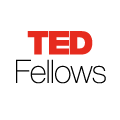7 Innovations That Will Change the Future of Medicine
From a gel that can instantly stop traumatic bleeding to a laser for targeted treatment of HIV, these medical innovations created by TED Fellows could soon be saving lives.
1. The $1 paper microscope
What if you could build a microscope — an important and often expensive tool for disease diagnostics — by simply folding a piece of paper, origami-style? At Stanford University, bioengineer and inventor Manu Prakash runs PrakashLab, a curiosity-driven lab that focuses on bringing affordable scientific tools to people in resource-poor places. His foldable paper microscope — Foldscope — costs less than $1, provides over 2,000x magnification, can be assembled in 3-5 minutes and is currently being used in developing regions to detect helminths, observe Stickleback fish eggs and much more.
2. A gel that instantly stops bleeding
As a freshman at New York University, Joe Landolina discovered a plant-based polymer capable of mimicking the body’s extracellular matrix —the complex mesh of fibers, sugars and proteins that hold the body’s cells in place. In fact, this polymer can form a seal over a gaping wound, accelerating the production of fibrin and helping blood to clot quickly. He’s turned this discovery into a potentially life-saving product — VetiGel — which is currently being developed by Landolina’s Brooklyn-based company Suneris. It has been determined safe to use on animals in veterinary settings, and once it is approved for human use, it could save lives at accident sites and on the battlefield.
3. A low-cost incubator for premature babies
As an MBA student at Stanford Business School, Jane Chen’s Entrepreneurial Design for Extreme Affordability class set out to make an affordable, easy-to-use incubator that could help save the 4 million premature and low-weight infants that die each year from neonatal hypothermia. With the results of the class, Chen co-founded Embrace, a non-profit organization that produces a low-cost baby warmer for developing countries at less than 1% of the cost of a standard incubator. How does Embrace work? The infant warmer looks like a miniature sleeping bag, and uses a wax-like substance which slowly releases heat over time, allowing the warmer maintain a safe temperature. So far, Embrace has saved the lives of over 150,000 babies in 10 countries.
4. Emergency triage in an app
The first step in addressing a patient’s needs when they check into a hospital is triage — the process of prioritizing injuries and illnesses. But research from the Western Cape in South Africa shows that in certain settings, 1 in 4 patients may be incorrectly triaged, especially when nurses are overworked or a hospital is overcrowded. South African emergency room doctor Mohammad Dalwai co-founded The Open Medicine Project South Africa (TOMPSA), which has created a Mobile Triage App that helps medical workers ask a series of standard triage questions, and calculate medical scores as vital signs are added. In addition to the Mobile Triage App, TOMPSA is working on a TB Clinical Guide App and has released an HIV Clinical Guide App, which provides guidelines for healthcare workers treating HIV patients in South Africa, and a GeneXpert Support App, which helps medical nurses and doctors test for tuberculosis.
5. Human bones, grown in a lab
It may sound like the stuff of science fiction, but tissue engineer Nina Tandon is growing artificial bones with her company EpiBone. How does it work? First, a precise 3D model of the patient’s bone defect is created using a CT scan. This 3D model is turned into a unique bone graft for the patient, and grown inside a bioreactor. Adult stem cells from the patient are then infused into the bone graft and matured into a graft that’s ready for implantation, and because the bone is made from the patient’s own cells, the body is less likely to reject the transplant. Epibone may be used in the treatment of trauma, congenital defects, cancer and more.
6. Animation for scientists, by scientists
Remember those awful stick figure illustrations from your high school textbook used to depict complicated scientific ideas? Molecular biologist and professional animator Janet Iwasa is changing this with Molecular Flipbook, a free, open source animation software created specifically for scientists to create molecular animations. Molecular animation allows processes too small to be seen — such as how the HIV virus gets into and out of cells — to be visualized and tested.
“Historically, physical models have played an important role in scientific discovery,” Iwasa says. “Having models that truly reflect our hypotheses will allow researchers to ask better questions and design better experiments. Animations are also a great way to share our research and ideas with broad audiences, including students and the interested public.”
7. A laser that zaps HIV
Anti-HIV drugs delivered orally can lose effectiveness: they’re diluted as they travel through the body on the way to viral reservoir sites like the lymph nodes, the nervous system and white blood cells. That’s why laser scientist Patience Mthunzi is developing a method that uses lasers to pierce tiny holes in HIV-infected cells to deliver medicine directly to affected areas. Mthunzi is currently carrying out her research in petri dishes, but plans to test it in the human body using a three-headed device to include a laser, a camera to find the site of infection and a drug delivery mechanism. If Mthunzi succeeds, this technology could one day be used to eradicate HIV in the system.
Interested in becoming a TED Fellow? We have begun the search for the next class of Fellows and are seeking 20 extraordinary individuals at work on world-changing ideas. Learn more about the Fellows program and apply online.
The TED Fellows program hand-picks young innovators from around the world to raise international awareness of their work and maximize their impact.
